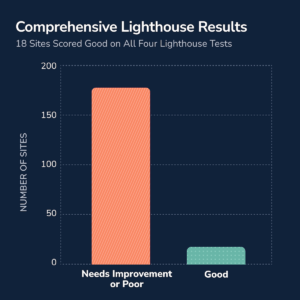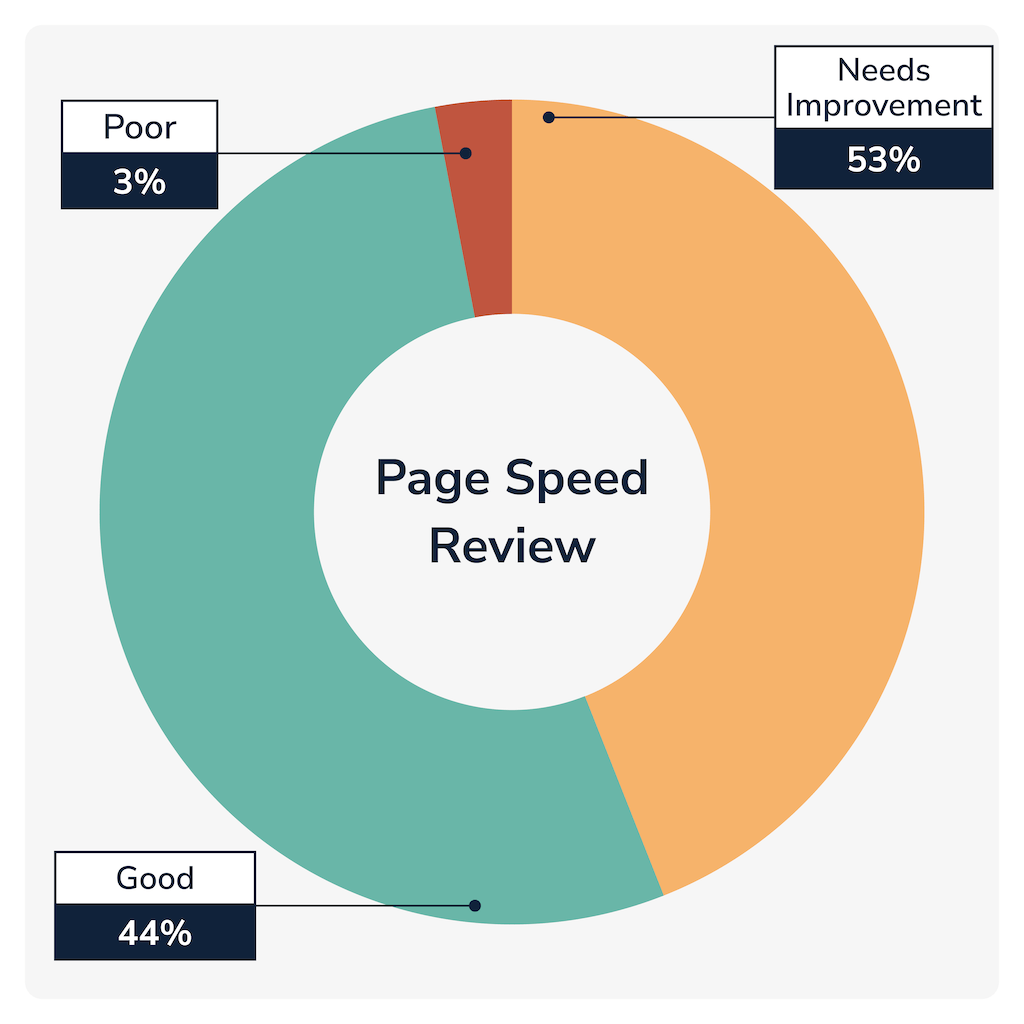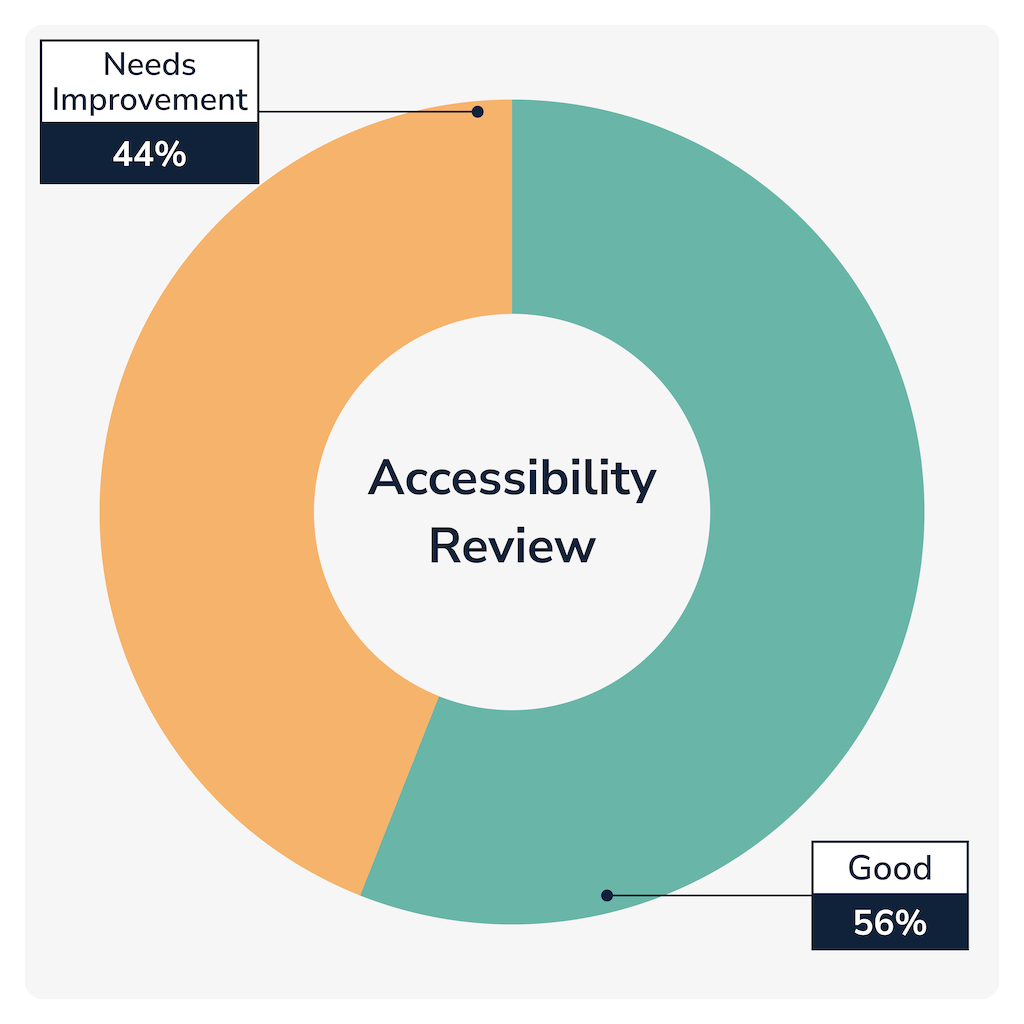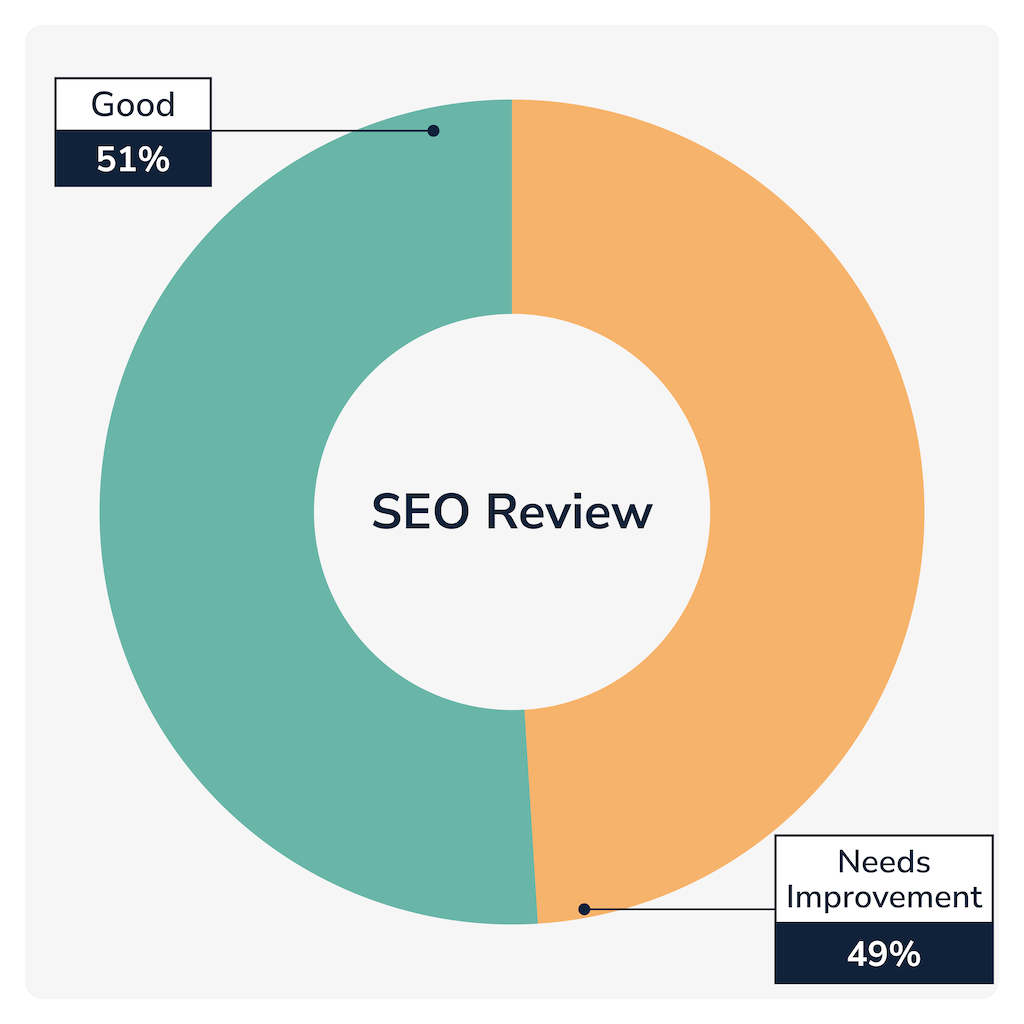

Study Uncovers Performance Gaps in Home Health Agency Websites
Key Takeaways
-
The majority of home health websites score poorly against Google's performance thresholds.
-
As an industry, home health websites broadly fail to meet current standards for user experience.
-
The study highlights key digital challenges for home health agencies in the coming years.
A recent study conducted by DBS Interactive has raised concerns about the subpar performance and accessibility of websites belonging to home health agencies across the country. The study examined nearly 200 randomly selected websites within the home health industry and revealed significant deficiencies in critical metrics such as performance, best practices, accessibility, and SEO.
 Of the 193 websites assessed, eighteen scored between 90 and 100 across all four criteria that the Google Lighthouse audit ranks as “Good.”
Of the 193 websites assessed, eighteen scored between 90 and 100 across all four criteria that the Google Lighthouse audit ranks as “Good.”
Only four websites reviewed were built as Progressive Web Applications (PWAs), a feature that can enhance user experience and search engine rankings.
The evaluation focused on websites representing home health agencies in various metropolitan areas throughout the United States.
Like many businesses, a home health agency’s website is the primary gateway for individuals seeking care or information. The sites also play a crucial role in attracting prospective employees.
However, a website with poor performance metrics is unlikely to rank high in search results. Visitors encountering a subpar user experience are likelier to exit a site immediately, contributing to a high bounce rate.
Performance Challenges
The performance component of the Google Lighthouse test evaluates various aspects of a website’s page-loading time. Family and loved ones often urgently need information to make timely healthcare decisions.
A slow-loading site creates an obstacle to accessing crucial resources promptly.
Fast-loading websites provide quick access to essential details about home health services, including healthcare offerings and contact information.
The Lighthouse Performance score evaluates various aspects of a website’s page-loading speed and responsiveness, including server response times, resource loading efficiency, and rendering performance. It helps identify opportunities to optimize website performance for faster loading times and better user experiences.
Unfortunately, most websites evaluated in this study failed to meet this standard.

Conversions decrease and bounce rates increase as pages take longer to load.
“The disparity in performance among home health agency websites underscores the importance of optimization to achieve faster loading times and smoother user experiences."
– John Golden, Director of Development at DBS Interactive
Over 70% of the home health agency websites fell into the “needs improvement” and “poor” performance categories. While most sites scored between 50 and 89 in the “needs improvement” range, some received even lower scores, with the lowest performance rating recorded at 16. However, there were exceptions, with 11 websites achieving a perfect score of 100.
Website visitors lack patience, and Google research confirms that. The search found bounce rate probability, or the likelihood a visitor will immediately leave after landing on a website, increased by 32% as page load times increased from one to three seconds.
Accessibility Concerns
The study also highlighted concerns regarding website accessibility within the home health industry. Individuals with disabilities, as well as aging populations, rely on accessible websites to access vital information about home health services.
The results showed that 57% of the websites have scores below 90 and need improvement.

An accessible website makes it easier for the primary audience to use a home health website.
“For individuals with disabilities and aging populations, accessibility isn't just a preference—it's a necessity for accessing vital healthcare information,"
– Cyndi Masters, Founder & CEO at DBS Interactive
Over half of the websites evaluated scored between 50 and 89 for accessibility, placing them in the “needs improvement” category. From missing alt text for images to poor color contrast and inaccessible form controls, the accessibility issues identified were varied but concerning.
Low accessibility scores also raise a red flag for legal departments that minimize a business’s lawsuit exposure. The Americans with Disabilities Act has been interpreted to require accessible websites just as it requires accessibility for physical places.
Despite lawsuits against notable companies like Domino’s Pizza, Target, and Harvard University, many companies have not yet built and maintained websites that comply with the Americans with Disabilities Act (ADA). Today, compliance generally equates to following the WCAG 2.1 AA criteria.
Accessibility features such as descriptive alt text for images, proper heading structure, and keyboard navigation improve the user experience.
Benefits of an Accessible Website
- Improved search engine performance
- Positive brand reputation
- Faster user experience
- Improved user pathways
- Attracts and serves a wider audience
- Reduced legal exposure
Any Lighthouse Accessibility score below 90 means the website’s lack of accessibility could make it the target of a lawsuit.
SEO Wasted
Users needing home health services and job seekers begin with a search on Google, Bing, or other search engines. Beyond keywords, the impact of low-performance scores on website visibility in search rankings becomes crucial.
It can mean the difference between being in the top three or so organic results and everything else in the virtual abyss.
SEO training company Backlinko, using Google data, found that less than 1% of users scroll much beyond the top 10 search results.
These scores directly affect user experience signals such as page speed and accessibility, leading to high bounce rates and wasted efforts in producing keyword-optimized content. Companies must prioritize website optimization to enhance organic search performance and stand out in the competitive digital landscape.
The Lighthouse assessment evaluates factors such as meta tags, mobile-friendliness, crawlability, and content quality.

About half of websites may be missing out on the SEO benefits.
“Your website is often the first impression people have, and with more users turning to search engines for home health services, nailing website performance is a game-changer, said Steve Fowler, Director of Marketing at DBS Interactive.
While Google Lighthouse does not directly evaluate all aspects of SEO, elements such as meta tags, structured data markup, and mobile-friendliness are essential for organic search performance. Websites that follow SEO best practices are more likely to rank higher in search results and attract organic traffic.
Agencies with low-performing websites face a competitive disadvantage as they struggle to attract visitors and stand out from competitors in the home health industry.
Impact on Pay-Per-Click Advertising
Beyond the impact on organic search traffic, low website performance poses a significant threat to the effectiveness of pay-per-click (PPC) advertising campaigns.
A poor-performing website diminishes the ROI of PPC advertising efforts in several ways.
A slow-loading landing page leads to increased bounce rates, as impatient users are likelier to abandon the site before engaging with its content. This means valuable advertising dollars are wasted on clicks that fail to translate into conversions.
Also, advertising platforms like Google consider factors like page load speed when determining ad quality scores and placement. A website with subpar performance may receive lower quality scores, resulting in higher costs per click and reduced ad visibility. A home health company may spend more on advertising while achieving fewer results, ultimately eroding their marketing budgets.
About the Website Study
DBS Interactive, a full-service digital agency in Louisville, Ky., reviewed 193 websites for home health companies in February 2024, selected randomly from cities throughout the U.S. The results show somewhat better scores compared with websites for skilled nursing websites and manufacturing sites. Poor performance creates opportunities for competitors.
Evaluations were done on the mobile component of the Lighthouse tool because Google prioritizes those scores and the mobile user experience over desktop websites for organic search rankings.
Quick Facts
- 84 websites scored “Good” (above 90) for Performance
- 5 websites scored “Poor” (below 49) for Performance
- 9% scored above 90 for all metrics.
- 4 websites were built as Progressive Web Apps (PWA)
- 49% of the sites need improvement for SEO performance
“Addressing performance issues and enhancing accessibility not only ensures compliance with digital standards but also positions businesses for sustained success in the competitive digital landscape,” Masters said.
As home health companies navigate the competitive digital landscape, the study highlights the need for a proactive approach to web development. Addressing performance issues and enhancing accessibility ensures compliance with digital standards and positions businesses for sustained success.
The Path Forward
As agencies navigate the increasingly competitive market for home health services, addressing performance and accessibility issues is imperative. This ensures compliance with digital standards and positions businesses for sustained success.
The study’s findings underscore the need for a proactive approach to web development within the home health industry. By prioritizing performance optimization and accessibility enhancements, agencies can create digital experiences that resonate with their target audience and align with their organizational goals.
However, home health companies are already stretched thin as they face the challenges of not having digital marketing and website development horsepower to build and maintain a high-performance website.
“It’s an investment that benefits website visitors, and improving performance means it’s good for the bottom line,” Masters said.
It's easy to audit your website using these Lighthouse instructions.
After you get your results, please CONTACT US to discuss opportunities.




